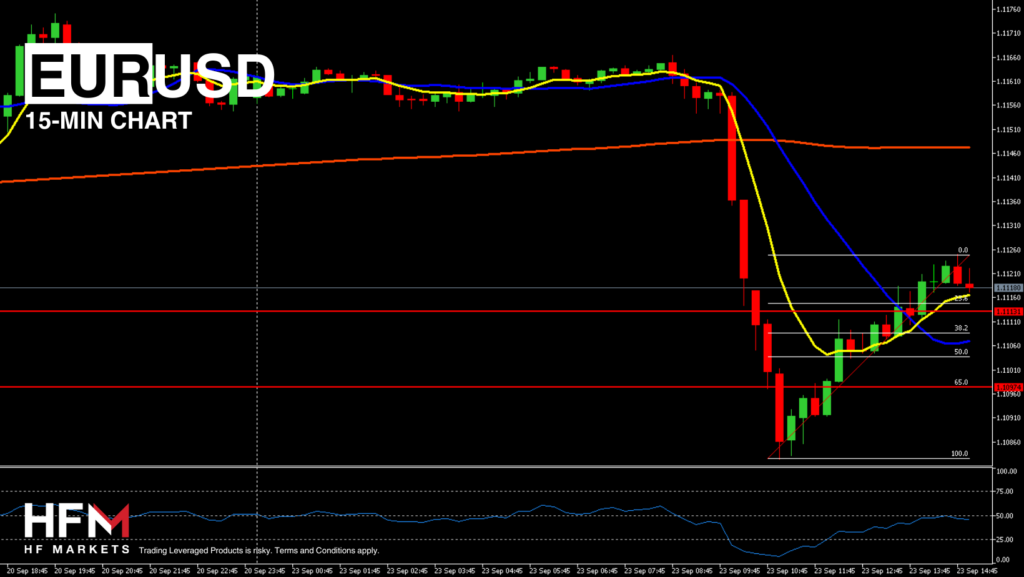- The Japanese Yen and US Dollar become the best performing currencies of the day after poor UK and EU data.
- The German Manufacturing PMI falls to its lowest level in 12-months and European PMI data signals an economic decline.
- Economists expect the European Central Bank to continue cutting interest rates.
- Gold and Silver take a hit as demand for safe haven currencies rises.
EURUSD – German Manufacturing PMI falls to its lowest level in 12-months
The EUR/USD is trading 0.35% lower Monday’s but fell as low as 0.68% earlier in the day. The sharp decline resulted in buyers taking advantage of the lower price which was largely oversold on most indicators. However, investors should note that price action can continue to change as the European session edges closer to the US open.
In regards to the US Dollar, the currency is stabilizing near its annual lows, just above 100.00 points on the US Dollar Index, following the US Federal Reserve’s decision to reduce the interest rate by 50 basis points. Initial jobless claims dropped from 231K to 219K, marking the lowest level since May, while total claims fell from 1.843M to 1.829M. Conversely, August’s existing home sales declined from 3.96M to 3.86M, the lowest figure since the start of the year.
However, the volatility of the upcoming 24-hours will largely depend on this afternoon’s Purchasing Managers’ Index for the US. Analysts expect the Manufacturing PMI data to improve from 48.0 to 48.6, but for the Services sector to remain unchanged. If both PMI data read higher, investors will deem this as positive for the US Dollar.
The European PMI data read significantly lower than previous expectations and previous months. The French PMI fell to 44.0 for Services and 48.3 for the Manufacturing sector. German Manufacturing PMI fell from 42.1 to 40.3, its lowest level in 12-months. The German Service sector also saw a lower PMI release.
In terms of technical analysis, the price of the EUR/USD continues to retrace back towards the support level. This support level is known to flip onto a resistance level for as long as sellers control the exchange rate. In 2-hour the price is trading between the 75-Bar EMA and 100-Bar SMA. This is known to be an area where the exchange rate is neither in a buy nor a sell signal. If the price falls back below 1.10974 Fibonacci levels indicate a sell signal. Whereas, crossovers indicate a sell signal may arise much earlier at 1.11131.
Click here to access our Webinar Schedule
Michalis Efthymiou
Market Analyst
Disclaimer: This material is provided as a general marketing communication for information purposes only and does not constitute an independent investment research. Nothing in this communication contains, or should be considered as containing, an investment advice or an investment recommendation or a solicitation for the purpose of buying or selling of any financial instrument. All information provided is gathered from reputable sources and any information containing an indication of past performance is not a guarantee or reliable indicator of future performance. Users acknowledge that any investment in Leveraged Products is characterized by a certain degree of uncertainty and that any investment of this nature involves a high level of risk for which the users are solely responsible and liable. We assume no liability for any loss arising from any investment made based on the information provided in this communication. This communication must not be reproduced or further distributed without our prior written permission.




















